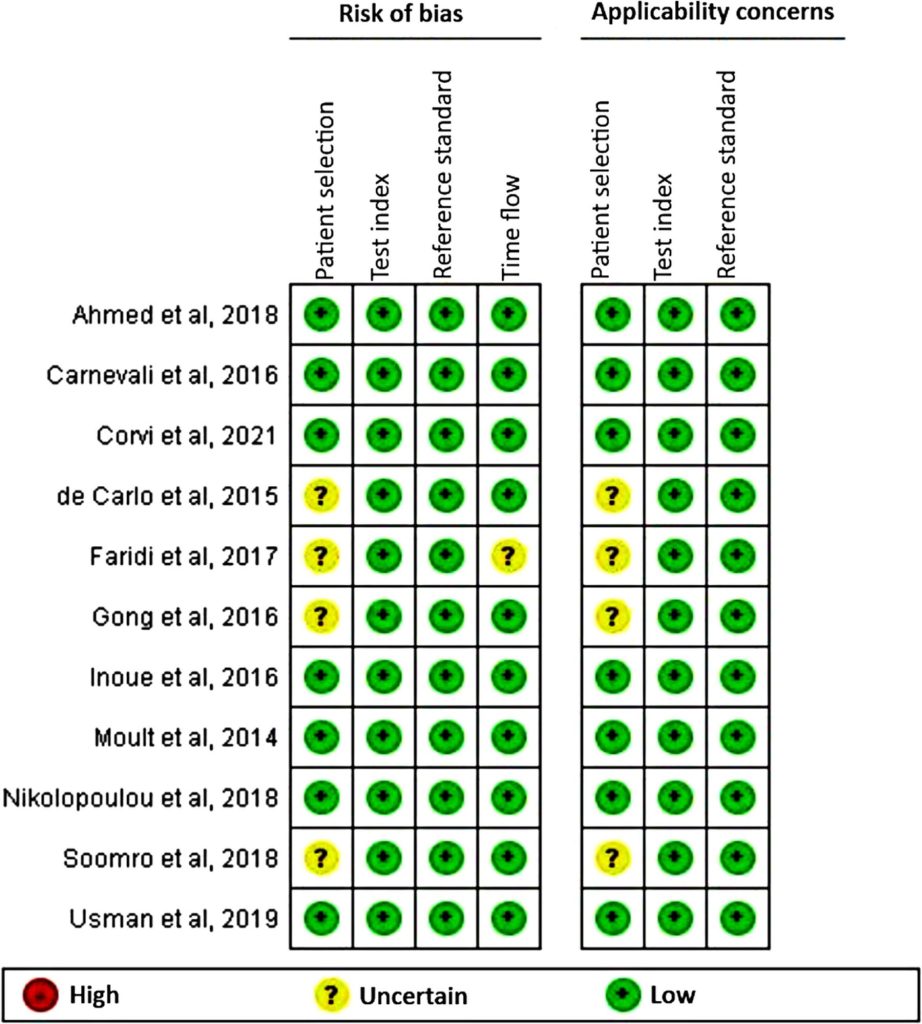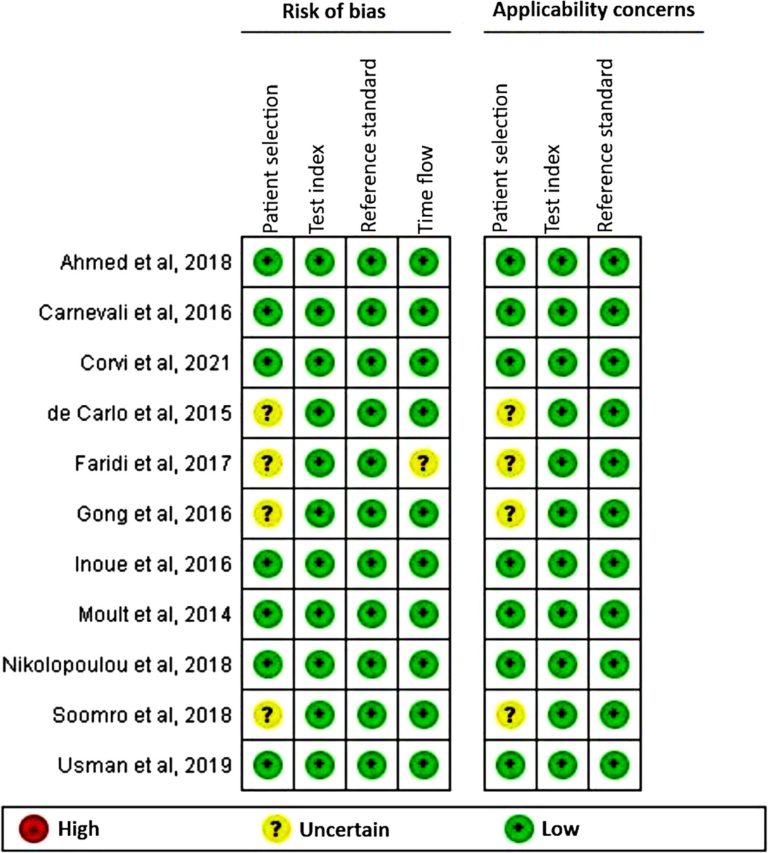einstein (São Paulo). 10/nov/2025;23:eRW1521.
Optical coherence tomography angiography for the diagnosis of choroidal neovascularization in age-related macular degeneration: a systematic review
DOI: 10.31744/einstein_journal/2025RW1521
ABSTRACT
Objective:
To evaluate the diagnostic accuracy of optical coherence tomography angiography for the identification of choroidal neovascularization in age-related macular degeneration.
Methods:
This systematic review followed the Preferred Reporting Items for Systematic Reviews and Meta-Analyses (PRISMA) 2020 recommendations. A literature search of the PubMed/MEDLINE, Scientific Electronic Library Online (SciELO), EMBASE, Cochrane Library, CAPES Periodicals, and LILACS scientific databases was conducted to identify relevant full-text articles published in English and Portuguese from January 2012 to January 2025. To comprehensively evaluate the effectiveness and the performance of optical coherence tomography angiography in terms of sensitivity and specificity, fundus fluorescein angiography (the gold standard for detecting choroidal neovascularization) was used as the comparator. The Quality Assessment of Diagnostic Accuracy Studies (QUADAS) 2 tool was used to assess methodological quality and risk of bias.
Results:
Eleven articles were included in the systematic review. The patients’ mean age ranged from 58.5 to 79.7 years. The sensitivity ranged from 50.0% to 94.0%, and the specificity ranged from 67.6% to 100.0%. The risk of bias was low, and the methodological quality of the studies was good, suggesting that optical coherence tomography angiography holds promise for the diagnosis of choroidal neovascularization.
Conclusion:
Optical coherence tomography angiography exhibited high sensitivity and specificity, demonstrating its potential for the detection of choroidal neovascularization in patients with age-related macular degeneration. However, current scientific evidence suggests that optical coherence tomography angiography is not superior to fundus fluorescein angiography and should not be used as a substitute. Extended and affordable protocols to analyze different subtypes of choroidal neovascularization and the performance of optical coherence tomography angiography devices should be evaluated.
Prospero database registration:
CRD420251046669.
13



